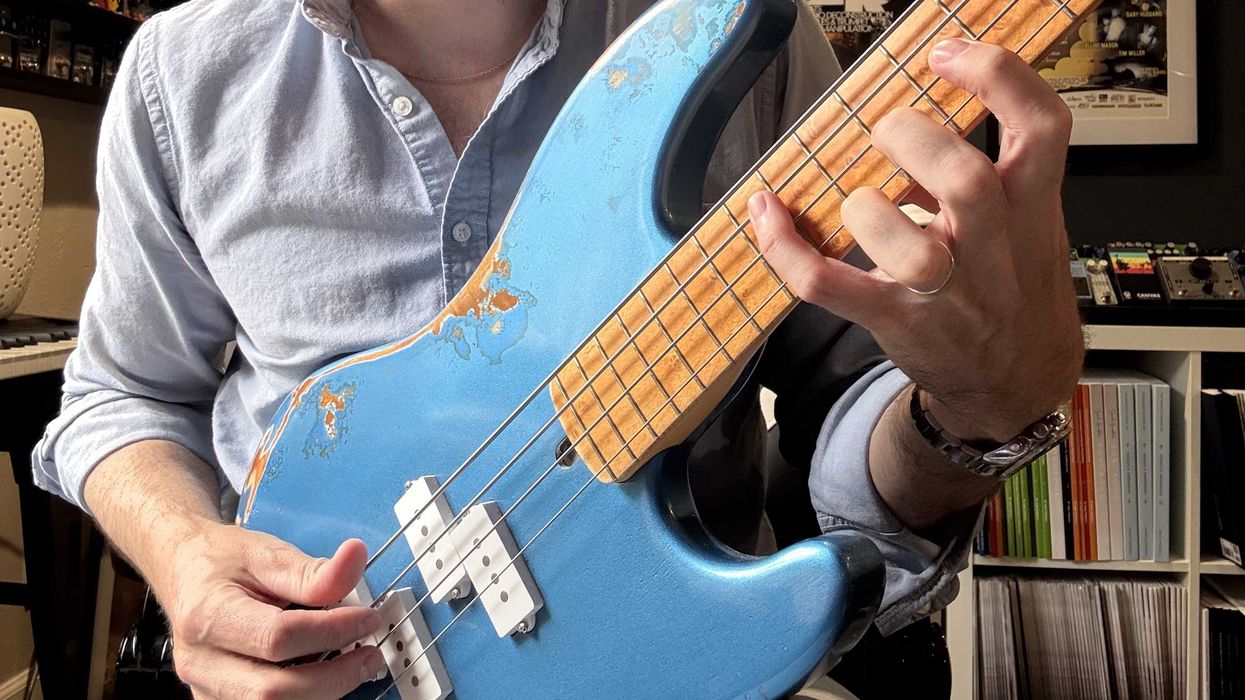In my last column [“Easily Avoidable Bass Pitfalls,” August 2018], I touched on some common mistakes people tend to make when starting out on bass. Even intermediate-level players who have switched to bass from another instrument sometimes struggle with these pitfalls. We looked at playing too hard, which results in choking the tone from your instrument, as well as playing too softly, which leads to not engaging your instrument’s wood enough and relying too heavily on onboard electronics. These habits aren’t necessarily that easy to eliminate, but changing them will make a big difference in your sound. I’d like to continue the theme by talking about equipment-related pitfalls I see quite often.
Monitor your action. Almost every time I walk into a music store and play basses, I find that the action on most of the instruments is more than just a little off. Personally, I have a fairly hard time judging an instrument if it doesn’t play like the basses I already own. How many times have you gone into a shop and picked up a bass with strings so low that all you could hear was fret noise and rattling? Every note you try to play on a bass like that has the same effect on your tone as playing too hard. On the other side of the spectrum, some basses in the store might have super-high action, often with a bowed neck that effectively makes you feel like you are playing an upright bass. High-action basses may not only cause hand fatigue and intonation issues, but also volume issues when you go above the 12th fret on the thicker strings.
I have a few basses that are exceptionally sensitive to travel, so I travel with a truss-rod tool for whatever bass I have with me. A small, five-second tweak post-travel will correct any change and can make a night-and-day difference in how much I enjoy playing a particular bass, not to mention how the bass sounds. I’ll play an inexpensive bass that’s set up correctly over a higher-quality instrument where the action is off, any day of the week. Just make sure the action on your bass feels great and that you are getting the best tone possible by having the strings vibrate at a good height. You might be surprised.
Choose the right strings. Knowing what type of string and gauge to use involves a bit more effort than finding out what your favorite player is using or simply going with what you used to use a few years back. Musical influences change and you may incorporate different techniques into your playing over extended periods of time, so your equipment may have to change with you.
There are hardware justifications for careful string selection, too, such as certain basses suffering from the two thinner strings not possessing enough low end compared to the two thicker strings, which can create unevenness. A simple solution to this scenario is a heavier gauge for the thinner strings to beef up their sound. Billy Sheehan, however, employs the opposite approach. His signature-gauge set of strings has a lighter-than-typical gauge for the thinner two strings to facilitate hammer-ons, pull-offs, and bends. The lesson here is that an off-the-shelf set of strings put together by a string manufacturer might not suit you, your playing style, or the requirements of your instrument.
I have a few basses that get different string treatments because of the way they are tuned. My 4-string bass that is always tuned down a half-step, for example, gets a heavy gauge set of strings to make sure it feels like one of my basses in standard tuning. I have a short-scale bass with a woofer neck pickup that most people would string up with flatwounds, but I keep an older set of roundwounds on it instead. This ensures the bass will still have an old-school tonal character without getting too muddy. What I’m getting at here is that each instrument and the way your playing style changes between your basses will likely require you give extra thought to string choice. Beginning and intermediate players alike will often obsess too long over fretboard wood, pickups, and the design of the bridge, when choosing the right strings for a particular instrument is something that needs equal attention.
Breathing. Oh boy, is this a big one. Classically trained vocalists spend many years of their lives focusing on breathing. People who practice yoga and meditation spend countless hours trying to be aware of their breath and to regulate it so their practice can be as successful as possible. Where am I going with this? Playing bass guitar is truly a full-contact sport. It’s a physically engaging and demanding instrument, and I had problems with my breathing for many years. I’d get too excited, move too much, and was maybe having too much fun. Making sure you breathe deeply and calmly—even when you are excited—will result in a deeper pocket, better sense of time, and a more even attack as you pluck the strings.















